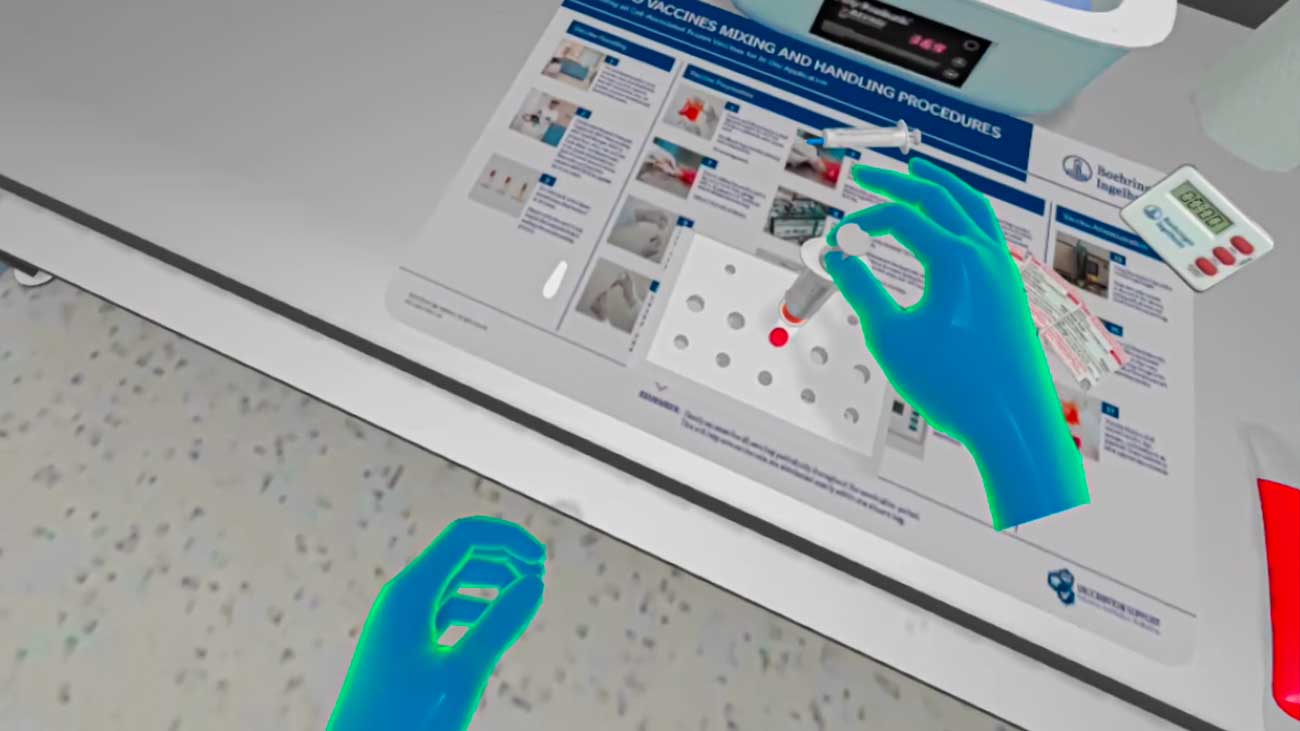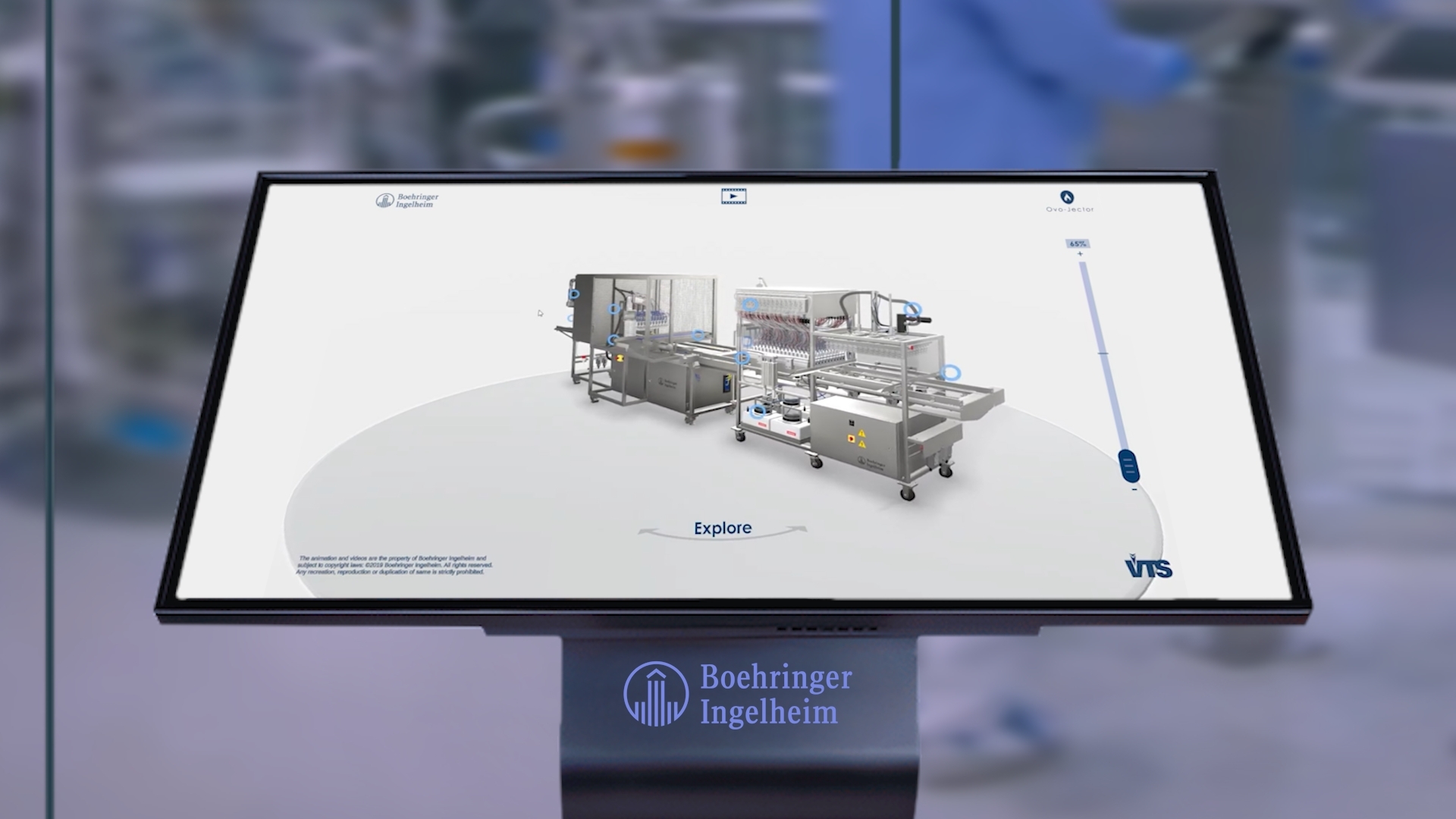Simulation learning positions itself as a key model in high-risk environments
The simulation learning has become the key to form with efficiency in high-risk environments. We are no longer talking about endless manuals or monotonous presentations, but about immersive, gamified and secure experiences that allow learning by doing, without putting resources or people at risk. The training is transformed into something real, practical y memorableall thanks to Virtual Reality.
In this blog you will discover how leading industrial companies and enterprises are revolutionizing the way they teach with simulations, digital twins and AI avatars. An essential guide to understand why this methodology is no longer the future but has already reached the business environment to improve learning and professional training.
What is simulation learning and how does it work?
The simulation learning is an innovative strategy that enables the acquisition of knowledge and skills through hands-on experience in virtual environments. y controlledreplicating real-life situations without risk. This action-based approach offers total immersion, where the user faces challenges, makes decisions and receives immediate feedback, achieving effective and lasting learning.
The effect of simulation on learning is undeniable: improves retention, boosts confidence and prepares professionals to act successfully in high-risk environments. For this reason, simulation is positioned as one of the most important key tool for training, error prevention and safety assurancemaking it the best option for sectors where every decision counts.
An example of the great impact that simulations have on professional training can be found in the project conducted by Global Spedition. The transport company, which specializes in hazardous transports, has developed its occupational risk prevention training in Virtual Reality. A fact that had a favorable impact on the acquisition of knowledge and the speed at which its workers were trained. Gamifying the educational experience by incorporating times, rankings and bonus points into the simulation.
Simulation as a learning strategy in high-risk environments
In sectors where the margin of error is minimal, such as medicine, aviation or the energy industry, the simulation as a learning strategy has become an essential tool. Enables training of key skills in virtual, secure and controlled environmentswhere professionals can experience critical situations with no real consequences. This action-based methodology improves decision making, reduces errors and strengthens preparedness for high-pressure scenarios.
You may be interested in → What is Industry 4.0 and what are its main characteristics?
The relevance of creating controlled environments for high-impact practices
Controlled environments are key to high-impact learning: allow to fail, repeat and improve without risk. Whether in a virtual operating room or in a virtual laboratory such as Boehringer Ingelheim's.These immersive experiences faithfully replicate real-life situations, offering professionals a safe and effective practice.
The examples of simulation learning demonstrate that this strategy improves performance, boosts confidence and prepares for action.r when it really matters. The data shows it: according to the latest PwC report, training in Virtual Reality is 4 times faster than in a classroom.
Benefits you should know about simulation learning
When it comes to training in high-risk environments, safety and deep learning are essential. Many of the situations that workers and professionals will experience in their work environments will be stressful, unexpected and outside the traditional theoretical manuals. This is why the simulations in Virtual Reality They allow learning by doing, learning by trial and error, through (virtual) experience.
The following is a review of three key pillars on which the Virtual Trainings (VR training) that explain the transformative impact of simulation as a learning tool.
Confidence building
One of the most prominent benefits of simulation learning is the development of confidence. By facing complex situations in a controlled environment, employees have the opportunity to experiment without fear of making mistakes.This approach fosters active and experiential learning, resulting in more skilled, confident professionals who are able to address real-world challenges more effectively. This approach fosters active and experiential learning, resulting in professionals who are more skilled, self-confident and able to address real-world challenges more effectively.
Better preparation for unexpected situations
Simulation learning prepares employees for unpredictable scenarios, which turns out to be one of its greatest advantages. By recreating critical or infrequent situations, workers are able to Anticipate potential problems and respond calmly, making effective decisions in times of high pressure. This ability to adapt quickly to the unexpected reinforces knowledge retention, contributing to a deeper understanding of processes and strengthening the skills needed to face real challenges in the work environment.
Instant feedback
Immediate feedback is essential in simulation-based learning, and is enhanced by the integration of virtual avatars equipped with Artificial Intelligence. These agents interact in real time, providing customized responses and instant evaluations that are adjusted to the evolution of the user's performance. This continuous feedback process generates a dynamic environment of constant improvement, making learning much more effective and tailored to the needs of each individual.
Want to dive deeper into the use of AI in industry? Visit our post Artificial intelligence applications in industry
Outstanding examples of simulation learning
Simulation doesn't just sound good, it works, and these cases prove it. From hazardous materials logistics to pharmaceutical training, leading companies such as Global Spedition, Merz Aesthetics, CEVA y Boehringer Ingelheim have opted for immersive experiences. Here's how these companies have applied it.
- CEVA Velactis → This Virtual Training uses Virtual Reality to train veterinary professionals in the application of Velactis, a product for dairy cow health management. Through a virtual farm simulation, users can interact with gamified scenarios, view explanatory videos and participate in quizzes, all in a multilingual environment and with a training duration of less than 10 minutes.
- KAI XR Platform → One Virtual Reality educational platform designed for elementary and middle school students. This tool allows students to explore immersive experiences in subjects such as science, technology, history and sports, all through an intuitive interface accessible from web browsers and VR devices.
- Virtual Experience Veterinary → A VR training experience developed for veterinary students, allowing them to practice on a poultry farm without the need to be physically present. This solution overcomes the legal restrictions that prevent undergraduate students from accessing factory farms in the United States, offering a simulation of the safety and sanitary protocols that veterinary professionals must follow. The experience has been positively evaluated by users, with 96% giving between 4 and 5 stars, and 85% interacting with all the training content.
What else can you do? Other key tools for training
The simulation learning is just the beginning. The technological revolution in training environments goes much further, and today there are tools that raise the experience to unprecedented levels. We are talking about virtual avatars with AI, digital cufflinks y interactive environments realistic that monitor, analyze and optimize at each step. Let's take a look at its use with some of the most outstanding examples
Iria is a virtual avatar with AIdesigned to accompany the internal training of the Iveco team. Interacts in real time, resolving doubts and guiding users with proximity.. An innovative way of humanizing and personalizing digital learning, becoming a ongoing support within the training ecosystem.
The digital twin Boehringer Ingelheim accurately replicates a poultry machine to train personnel without using the actual equipment. Allows you to practice, explore and understand each component safely and remotely. Ideal for reducing errors and improving technical proficiency, obtaining training beyond a manual.
Certest, wanted to showcase its transformation by creating a interactive virtual twin of your facilities. We develop a 3D model detailed that allows to tour its factory and remote R&D centersfrom mobile or tablet. The experience not only enhances the value of its expansion, but is updated in real time thanks to a Custom CMS. A perfect tool for communicating innovation on a global scale.
These solutions, ranging from intelligent avatars to virtual twins, not only enrich the simulation-based learningThe new system will make it a more complete experience, accessible and adaptable to the challenges of the present. You can read more about virtual/digital twins in our latest post What is a virtual space and how to use it
If you have made it this far, you already know that the simulation learning is not the future, it is the present. An effective, safe and motivating strategy for training in complex or high-risk environments. Would you like to implement it in your company? At Imascono we are ready to help you make the leap. Contact us at and let's discover together how to transform your training into immersive experiences that leave a lasting impression.






